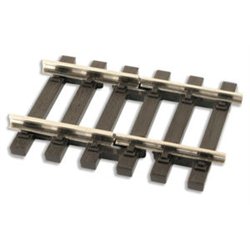Generally speaking, an up line travels towards a major town or city and a down line away from it, on main lines in...
No products
Product successfully added to your shopping cart
There are 0 items in your cart. There is 1 item in your cart.
Search Tips
How can I join Code 75 and 100 track segments on the same layout?
Periodically, modellers may face the issue of having dissimilar track codes present on the same layout. This can occur when both code 75 and code 100 track segments are in use. This is a significant problem as these two codes have different size rails that cannot be directly joined.
Realistically, there is only one option to achieve integration of the two codes and that is to use a specific Transition Track segment. These are small sections of track that are specifically manufactured to connect individual sections of Code 75 and 100 track. They are generally supplied in packs of four, such as the SL-113 Transition Track set produced by Peco.
When connecting the dissimilar track segments, it's important to ensure that the rails are aligned properly and that there are no gaps or misalignments that could cause derailments or other issues. Modellers may also need to adjust the height of the track to ensure that the rails are level and provide a smooth surface for the trains to run on.
Overall, joining Code 75 and 100 track segments requires careful planning and attention to detail to ensure that the track is seamless and provides a reliable and enjoyable model railway experience.
Click here to receive the tips weekly in your mailbox. You can unsubscribe at any time.








